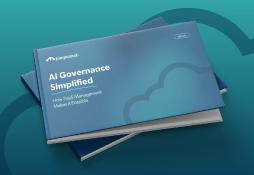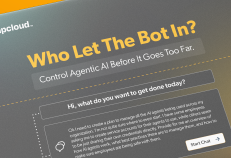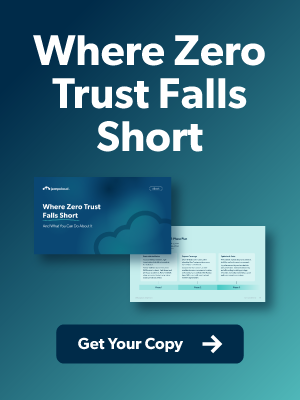Artificial intelligence is moving into a new phase. We’ve all seen what generative AI can do — summarize documents, create content on demand, and what not!
But a new category of AI systems is emerging that behaves very differently. These are AI agents. They don’t just execute commands, they operate with intent. Even with specific instructions in place, they can set their own goals, take action, and adapt in real time.
That autonomy makes them powerful, yet super risky. You have to treat it like an active participant in your environment — one that needs oversight, accountability, and limits.
And the best way to do that is to manage agentic AI as a digital identity.
What Makes Agentic AI Different?
Agentic AI changes the equation because it behaves more like a digital coworker than a piece of software.
It can:
- Set and pursue its own objectives.
- Break down complex tasks into smaller steps.
- Learn from past outcomes and adapt its behavior.
- Collaborate with other systems and agents to complete workflows.
That autonomy accelerates productivity, but it also introduces uncertainty. An AI agent may take actions you didn’t authorize, touch data you didn’t intend to expose, or misinterpret context in ways that cause compounding errors.
Left unchecked, these systems can create financial mistakes, compliance violations, or operational downtime before anyone notices.
This is why treating agentic AI as a managed identity is essential. Without that level of control, you’re relying on hope instead of governance.
Why Identity-First Governance Matters
Identity-first governance provides a structured way to manage every entity that interacts with your environment (human or non-human). When applied to agentic AI, it ensures these systems are governed consistently, their actions are visible, and their access is limited to what’s necessary.
There are several reasons why this approach is critical:
1. Accountability. By assigning each agent a unique identity, you can always trace which system took which action. That accountability is impossible if agents operate anonymously.
2. Access control. Scoping access based on the agent’s role prevents it from overreaching into areas it shouldn’t touch. Least privilege access reduces the impact of errors or malicious activity.
3. Real-time oversight. With centralized logging and monitoring, you can see what agents are doing as they act. That visibility allows faster detection and response to risky behavior.
4. Unified security policies. By integrating agents into the same identity framework as human users, you avoid gaps or inconsistencies in how rules are applied. Everyone and everything operates under the same security baseline.
Without identity-first governance, organizations risk treating AI agents as special cases that fall outside their normal controls. That creates blind spots attackers can exploit and makes compliance harder to prove.
Applying IAM and Zero Trust to AI Agents
Fortunately, the principles of identity and access management (IAM) and Zero Trust already provide a roadmap for managing agentic AI. The same controls that protect human users can be extended to AI agents:
1. Unique identities. Every agent gets its own credentials, tied to your IAM system.
2. Scoped roles. Access is defined according to the agent’s specific purpose. It can only interact with the systems and data it needs.
3. Multi-factor authentication (MFA) and Device Trust. Activity is verified to ensure the right entity is taking the right action at the right time.
4. Session controls. Activity can be limited by duration, context, or risk level.
5. Logging and auditing. Every action is recorded, timestamped, and searchable for full accountability.
6. Segmentation. Access is isolated so that even if something goes wrong, the damage is contained.
By applying these practices, you move from uncertain, untracked AI behavior to a model where every agent is visible, governed, and accountable. That shift not only reduces risk but also builds the confidence to scale agentic AI with control.
How Unified Identity Governance Helps
Separate policies, siloed oversight, or fragmented tools make it harder to respond quickly when something goes wrong. The solution is unified identity governance — one framework for managing both human and AI identities.
With unified governance, you gain:
1. Consistent oversight. The same monitoring, policies, and enforcement apply everywhere.
2. Faster response. Centralized controls let you revoke or adjust access instantly if an agent goes off task.
3. Reduced blind spots. By managing all identities together, you avoid gaps where AI agents could operate without visibility.
4. Scalable security. As the number of AI agents grows, governance scales alongside them without adding complexity.
Organizations using a unified identity governance framework see fewer security incidents and respond to them faster. In environments where agents move faster than humans can react, unified governance gives you the control to take action decisively and early.
Preparing Your Organization for Agentic AI
The bottom line is that agentic AI systems are here, and they are only going to become more common. To manage them safely, your organization needs clear controls, continuous oversight, and the ability to act fast when something goes wrong.
Ask yourself these questions to know whether your organization is ready:
- Do you have clear boundaries around what AI agents are allowed to do?
- Can you see and trace every action they take?
- Are IAM and Zero Trust policies applied consistently to both humans and agents?
- Do you have processes to revoke access instantly if something goes wrong?
If the answer to any of these is no, your governance model isn’t yet ready for agentic AI. The sooner you address these gaps, the sooner you can take advantage of the benefits without exposing your systems, data, or people to unnecessary risk.
Building a Secure Future for AI Starts Now
Successfully adopting agentic AI takes more than technical enthusiasm. It requires a new way of thinking about accountability, security, and governance.
The only way to stay in control is to treat every AI agent as a digital identity. Give each agent clear boundaries, unique credentials, and limited access from the start. Monitor their behavior continuously.
When identity-first governance is in place, you ensure agents remain:
✅ Aligned with organizational goals.
✅ Compliant with security policies.
✅ Auditable at every step.
If your organization is exploring or already deploying agentic AI, check out the eBook Who Let the Bot In? It offers deeper insights into integrating agentic AI into your identity strategy — so you can scale innovation without compromising security.






